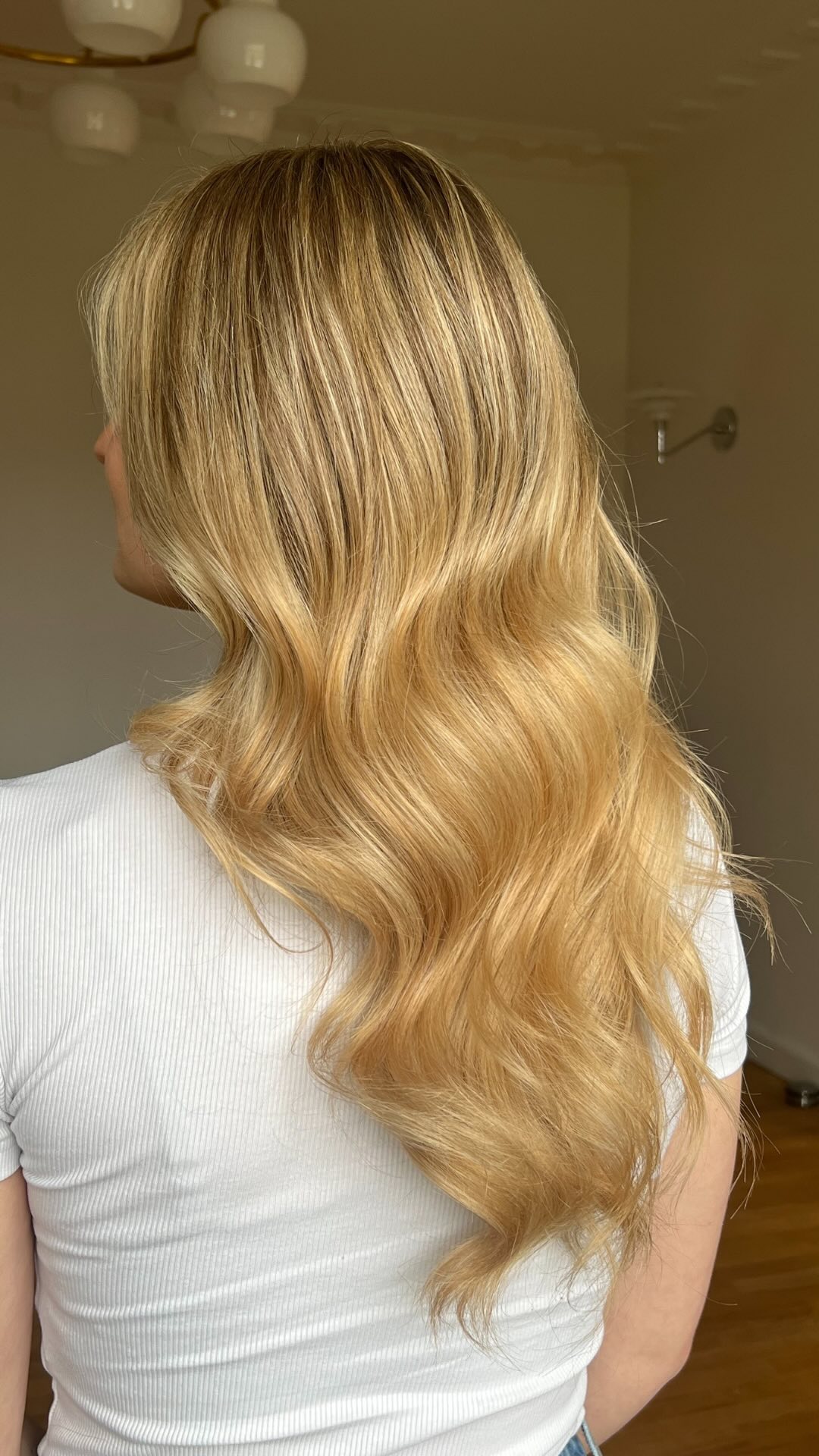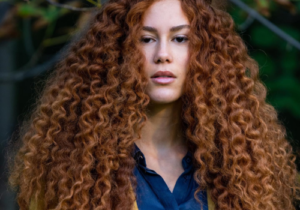Understanding hair color and its effects
For many people, getting back to their natural hair after coloring can seem like a daunting task. Hair coloring is a common practice that, while a great way to express personal style, can have lasting effects on hair health and texture. So it's essential to understand how coloring affects your hair before determining the best way to return to your natural shade.
What is hair coloring?
Definition and types of hair color
Hair coloring involves using chemicals to change the hair's natural color. There are several types of hair color, including permanent, semi-permanent and temporary. Permanent hair color penetrates the hair cuticle to change the color in a lasting way, while semi-permanent and temporary simply cover the hair fiber.
Reasons why people color their hair
The motivations behind hair coloring vary. For some, it's about asserting a style or personality, for others it's a practical way to cover gray hair. For others, it's a practical way to cover gray hair. Still others seek to follow trends or achieve a more flattering color in relation to their natural complexion.
The consequences of hair coloring
How coloring changes hair structure
Hair color affects hair structure by altering the cuticle, the outer layer that protects the hair. The chemicals in dyes open up this cuticle to allow colorants to penetrate. This can make hair more fragile, dry and prone to breakage. In addition, frequent repetition of this process can further weaken the hair fiber.
The long-term impact of coloring on hair quality
Over the long term, repeated coloring can lead to a number of hair problems. These include a decrease in hair elasticity, making hair more prone to breakage. In addition, hair can become dull and lose its natural shine due to chemical build-up. In addition, loss of volume is common, with hair becoming less dense over time.

Methods for recovering natural hair after coloring
Let your hair grow naturally
How long it takes to get your hair back to its natural state
Allowing your hair to grow back naturally is one of the surest ways of restoring your original color. However, it takes time and patience. Hair growth rates vary from 1 to 1.5 centimetres per month. It can therefore take several months, or even years, for hair to regain its natural length and color, depending on the length of the hair and the shade initially chosen.
Specific treatments to encourage hair growth
To promote healthy growth of natural hair, it's essential to provide the right care. Nourishing and moisturizing treatments, such as hair masks based on natural oils like coconut or argan oil, can help strengthen hair and prevent breakage. In addition, vitamins and a diet rich in nutrients such as protein, zinc and iron can also play a crucial role in stimulating hair growth.
Use of bleaching products
Presentation of bleaching products
Bleaching products remove artificial pigments from color-treated hair. These products generally work by oxidizing and dissolving the color molecules, revealing a shade closer to the natural color. Available options include hair make-up removers and specific bleaching kits designed to gradually eliminate unwanted color.
Precautions to take when using bleaches
Although bleaching products are effective in removing artificial color, their use can be aggressive on the hair. They can cause excessive dryness and further damage the hair structure. It is therefore advisable to use them in moderation and strictly follow the manufacturer's instructions. In addition, an intense moisturizing treatment before and after using bleaches can help minimize damage and restore hair moisture.
Professional color removal treatments
Treatments available from a professional hairdresser
Hair salons offer a range of specialized treatments to help those wishing to restore their natural hair color. Among these, hair stripping is a procedure carried out by professionals to gently remove artificial pigments in complete safety. Another treatment is tone-on-tone coloring, which gradually camouflages the color while easing the transition to the natural shade.
The cost and effectiveness of these treatments
Opting for professional treatments usually comes at a higher cost than at-home solutions. However, the expertise of professional hairdressers often guarantees safer and more aesthetically pleasing results. Stripping and tone-on-tone coloring may require several sessions to achieve the desired effect, but they better protect hair health while reducing the risk of mistakes frequently made when attempting at home.
See also: How do you restore your natural color after coloring?
Tips for keeping hair healthy after returning to its natural color
Adopting the right hair care routine
The importance of gentle shampoos
- To keep your hair healthy, use a sulfate-free shampoo. Sulfates are too aggressive for hair and can lead to moisture loss and excessive dryness.
- Choose shampoos formulated with natural ingredients to nourish and strengthen hair left fragile after coloring.
Nourishing conditioners and masks
- Regular application of a moisture-rich conditioner helps detangle hair and protect the cuticle from external aggression.
- Incorporate weekly hair masks into your routine to provide hair with essential nutrients, improve elasticity and prevent breakage.
- Look for products containing keratin, proteins and nourishing oils to restore the integrity of the hair fiber.
The importance of a balanced diet
Essential nutrients for healthy hair
- Eat protein-rich foods such as fish, lean meat and legumes. They are essential for the production of keratin, the main protein making up hair.
- Foods rich in omega-3 fatty acids, such as walnuts and flaxseed, help keep hair moisturized and promote healthy growth.
- Make sure you eat a varied diet containing vitamins A, C and E, as well as zinc and selenium, to prevent hair loss and stimulate hair growth.
The impact of hydration on hair health
- Drinking enough water is crucial to ensuring hair is properly hydrated and prevents it from becoming dry and brittle.
- Herbal infusions and fresh vegetable juices can also be good alternatives for incorporating beneficial nutrients.
Daily hair care
Capillary massages to stimulate circulation
- Regular scalp massage promotes blood circulation, which can stimulate hair growth and make it stronger.
- Use a few drops of essential oil, such as lavender or rosemary oil, which not only nourishes the scalp but also has relaxing properties.
Protecting your hair from external aggression
- UV rays can damage the cuticle and discolor hair. Wear a hat or apply hair care products with sun protection to avoid this.
- Limit the use of heated appliances such as straightening irons or curling irons. When necessary, always apply a thermal protector beforehand.
- Avoid aggressive chemical treatments that could damage your hair's structure, such as perms or chemical straightening.
Consult a professional for regular follow-up
Benefit from a precise diagnosis
- Visit a hairdresser regularly to diagnose the condition of your hair and adjust your care accordingly.
- A hairdressing professional can advise you on cutting and treatment to keep your hair healthy.
Tips for the right haircut
- By regularly trimming the ends, you avoid split ends, which weaken hair and compromise its overall appearance.
- Choose a cut suited to your hair type to enhance its volume and natural texture.

Prevent future capillary damage
Avoid aggressive coloring in the future
Choose softer dyes
To minimize future damage to your hair, prefer ammonia-free dyes or natural solutions such as henna. These alternatives are less aggressive and better preserve hair health.
Spacing out coloring sessions
Spacing out your coloring allows your hair to recover between applications. Try to let your hair breathe for at least 6 to 8 weeks between colorings to limit long-term damage.
Incorporating intensive care
Deep hydration
Incorporating deep moisturizing treatments on a regular basis strengthens the hair cuticle and protects against breakage. Opt for moisturizing serums and specific ampoules for emergency care.
Maintaining natural oils
Excessive shampooing can remove the natural oils necessary for healthy hair. Wash your hair two or three times a week and use a dry shampoo to extend the intervals between washes.
Educating and raising awareness of hair care techniques
Education on styling
Educate yourself on good styling practices. Avoid too-tight hairstyles that stress the hair, and favor soft accessories such as fabric elastics.
Find out about suitable products
Know your hair type and choose the right products. Products containing silicones and parabens can weigh hair down and damage its vitality over the long term.
FAQ section
Is it possible to get back your natural color after years of coloring?
Yes, with time and the right care, you can regain your natural color. Patience is crucial, as this can take months or even years. Using gentle methods is essential to maintain the health of your hair.
What products are recommended to speed up the return to my natural color?
Use clarifying shampoos to help remove color residues. Nourishing masks and essential oils can also promote hair health and natural growth.
Should I cut my hair to remove the color faster?
Cutting your hair can actually remove the colored part more quickly. Regular trimming of the ends is recommended to minimize damage and encourage healthy growth.
How do you manage the dividing line during the transition?
To soften the demarcation line, try balayage techniques or temporary dyes that blend well with your new growth. Clever hairstyles can also hide the root transition.
What are the signs that my hair has been damaged by coloring?
Hair damaged by coloring is often dry, brittle and has lost its shine. Split ends and loss of volume are also common signs of hair damage.





